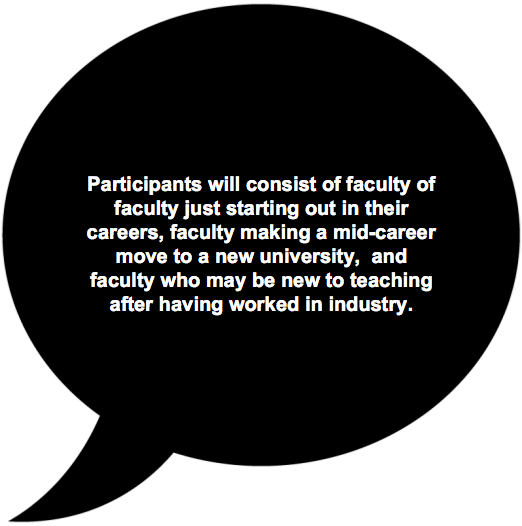Author and Editor: Dr. Shelly Wyatt
Dear ADDIE,
I am a senior instructional designer at a small liberal arts college in the South. I have been asked to head-up a somewhat daunting project: to transform our institution’s new faculty orientation (NFO) from its current face-to-face format into an asynchronous online format. The current NFO was developed, and is facilitated by, our Human Resources department and is required of all new faculty before they teach their first course. After the redevelopment, the new online NFO will be co-facilitated by an instructional designer and a member of the HR staff. Since my school is small, the job to transform our NFO will fall to me and one other full-time instructional designer/faculty developer plus one part-time instructional designer. It seems like a big job for a small team but we are also excited about the opportunity to have such a big impact on NFO and to show new faculty what we are capable of doing when it comes to online course development and instruction. So, here is my specific question: what are two or three recommendations that you can offer to help us get started? My colleagues and I really want to start on the right foot.
Signed,
Right Foot
Dear Right Foot:
Wow! You do have a big job on your hands! But this is an exciting opportunity to lend your expertise to an area that is so important – new faculty orientation. WIthout knowing the specific content of your institution’s orientation agenda, a typical NFO will contain information regarding institutional rules and culture, payroll and benefits, and specific guidelines relevant to faculty. This is also a great time to introduce faculty to instructional design support services and faculty development resources.

A good place to start is to consider a faculty development model, specifically the Quality Transformation Model for Faculty Development (Jowallah, Futch, Barrett-Greenly, & Bennett, 2016). According to this model, factors to consider when creating your NFO include scoping for sustainability, understanding of the institutional culture, addressing the needs of new faculty, and consideration of who will take ownership of the course. This model provides the groundwork for the planning stage of the development process. More specifically, the planning stage consists of selecting the design and development strategies that will form the course content and includes the exploration of tools and techniques that will shape your course.
As a co-facilitator and co-developer, your role will be vital to the success of this new approach to NFO. You will likely be collaborating with librarians, media technologists, research and commercialization, office of accessibility services, and other departments so be prepared to manage the needs and priorities of many stakeholders.
Something else to consider regarding the faculty who will be participating in NFO: participants will consist of faculty just starting out in their careers, faculty making a mid-career move to a new university, and faculty who may be new teaching after having worked in industry. This diverse group of learners means ensuring that this new NFO course will address the needs of a diverse group of learners. I also suggest establishing a plan for continuous improvement through ongoing assessment.
Regarding resources, in addition to the links above, include the TOPkit sample course. Although the TOPkit sample course is designed to serve as a customizable course for online faculty development, there are modules that could be adapted for a new faculty orientation course, including Copyright and Intellectual Property, FERPA, Open Educational Resources, Digital Textbooks, and Mobile Devices and Apps.
In closing, what are some other considerations that should drive initial planning of an asynchronous new faculty orientation? For example, what is the role of collaboration between the facilitators and the participants? What kind of course schedule would benefit participants the most? Please share your thoughts with our TOPkit community on LinkedIn!
